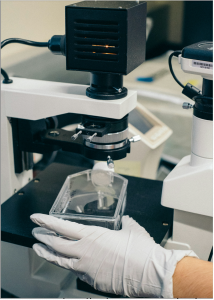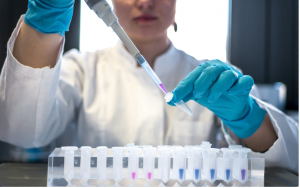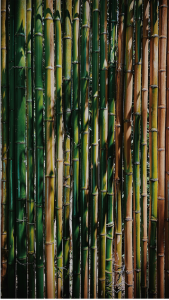Patent law is often thought to incentivize and benefit inventors. Patent holders have exclusive rights restricting others from making, using, selling, offering to sell, and importing into the U.S. their patented invention. However, the constitutional clause founding patent law aims to benefit the greater public by promoting the progress of science and useful arts. One of the ways patent law helps promote the progress of science is through the Enablement Requirement.
After a patent applicant satisfies the first four patentability requirements (patentable subject matter, novelty, utility, and nonobviousness), the applicant is still faced with satisfying the enablement requirement. Therefore, it is an important hurdle for an applicant to consider during their application. Before diving into the enablement requirement, let’s first quickly review the other patent requirements.

Photo by Jaron Nix on Unsplash.
The Basic Patent Requirements
If you’ve ever looked at a patent, you’ll notice there are several parts to a patent. Even if you’ve never looked at one before, we can do that now. Check out this one about a pet leash that serves as an umbrella for the pet. As you can see, a patent includes a front page, drawings, specification, and at the very end, patent “claims” (I’ll explain that later). The front page provides general background information such as the title, patent number inventors, an abstract, etc. Most patents also include drawings of the patented invention to help readers better understand the invention. The specification is the written part of the patent describing the invention details and providing context for the claims. Finally, every patent has claims which define what the patent legally covers.
There are key differences between a patent’s specifications and claims. Specifications describe the invention and enable a person having ordinary skill in the art (PHOSITA) to understand and reproduce the invention. Patent claims legally define what the patent covers for the invention.
For a patent to be granted, an invention must be patent eligible subject matter and useful. Essentially “anything under the sun” can be patentable except common law exclusions such as abstract ideas, laws of nature, and natural or physical phenomena. So, patents on, for example, mathematical formulas are excluded as laws of nature; for more on this you check out Johnny Jansky’s recent post “Can I Patent That? A Wade Into the Patentable Subject Matter Thicket.” And so long as the invention works and does what it claims to do, the invention satisfies the utility requirement.
The novelty requirement requires there is no “prior art” (any evidence the invention is already known through prior products, publications, uses, etc.) that discloses all of the claimed invention.
The invention must also be nonobvious. If the differences between the claimed invention and the prior art are such that the claimed invention would have been an obvious variation of the prior art to a PHOSITA, the invention is deemed obvious and non-patentable.
Finally, the patent application itself must satisfy certain requirements. It must provide an adequate written description of the invention and it must also satisfy the enablement requirement.
The Enablement Requirement – Background
What is the enablement requirement?
Codified in 35 U.S.C. § 112(a), the enablement requirement means a patent specification must “enable any person skilled in the art… to make and use [the invention].” The test for enablement is whether the PHOSITA could make or use the invention disclosed in the patent with general knowledge known in the particular field without undue experimentation.

Photo by Julia Koblitz on Unsplash.
The Supreme Court has discussed the enablement requirement multiple times since the 19th century. For example, the case of The Incandescent Lamp Patent involved Thomas Edison and incandescent lighting. Edison sought to use bamboo material in his lamp. Edison was sued for infringement by the patentees for an “electric lamp” with an “incandescing conductor” made of “mineral or gas carbon.” However, the Court rejected the patentees’ infringement allegation because it found the patent claim too broad. The claim at issue covered “every fibrous and textile material,” which would include bamboo. The broadness of the claim failed to enable a PHOSITA to make or use the claimed invention. The Court specifically noted that Edison underwent “painstaking experimentation” to discover bamboo would be an effective material for his lamp.

Photo by Franco Mariuzza on Unsplash.
The Enablement Requirement Remains the Same
On to 2023. The only patent law case that the Court decided on last year was Amgen v. Sanofi. Both Amgen and Sanofi are pharmaceutical companies. Amgen alleged Sanofi’s product, Praluent, infringed Amgen’s patented cholesterol drug, Repatha. The drug functions by having antibodies bind to receptors in the body. In its patent covering Repatha, Amgen provided 26 target antibodies as preferred embodiments. However, the claims at issue were broader, i.e. disclosed more, than these 26 antibodies. Amgen claimed all antibodies that “bind to specific amino acid residues on PCSK9 [(a protein)]” and block that protein from binding to bad cholesterol.
Though a bit more complicated invention than a lamp, the Court maintained its stance regarding enablement. The Court noted the resemblance to many of the past cases it had decided upon, including The Incandescent Lamp. Like the patentees in Incandescent Lamp, the Court found that Amgen sought to “monopolize an entire class of things defined by their function.” Within that class, there are many antibodies not shown in the embodiments that can achieve this function.
The Court explained that the broader a claim is, the more it must enable a PHOSITA. The methods claimed in the patent required undue experimentation to make or use the invention, and thus failed the enablement requirement.
The Court concluded that the enablement requirement is meant to ensure that not only the inventor benefit from obtaining patents, but also that the public does. In this way, the Court continues to solidify its position that patents should benefit the general public via enabling disclosures.

Matt O’Boyle
Assistant Blogger
Loyola University Chicago School of Law, J.D. 2025
